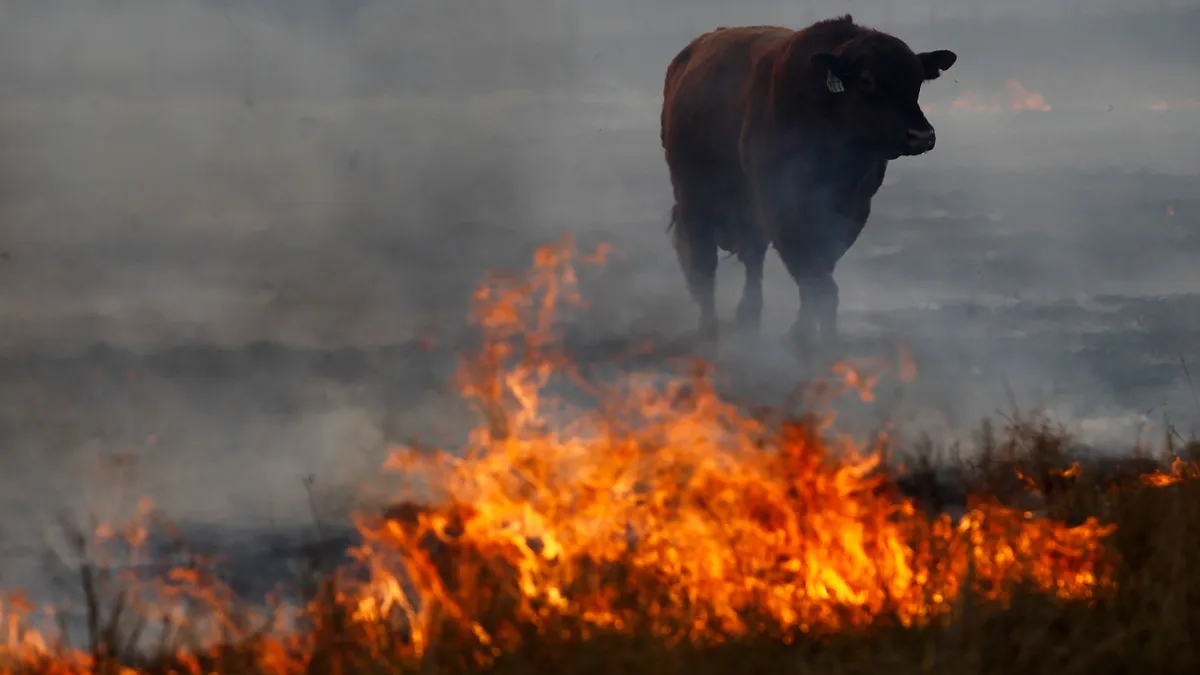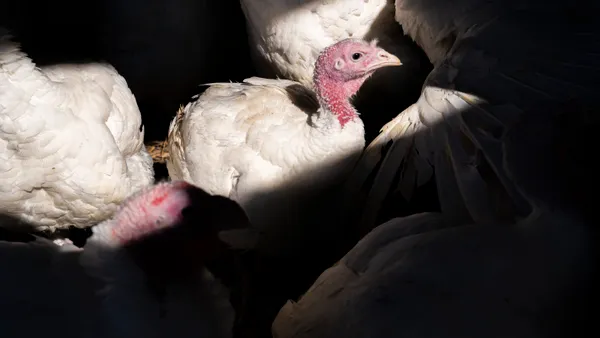Dive Brief:
-
One of the largest wildfires in Texas history has ranchers scrambling to protect their livestock and crops as the record blaze sweeps its way through cattle country.
-
The Smokehouse Creek fire, which broke out Monday along with several other infernos, spread eastward over a few days to surpass 1 million acres, becoming the largest and most destructive fire in state history, according to the Texas A&M Forest Service. Only 3% of the fire has been contained, officials said Thursday afternoon.
-
Texas Agriculture Commissioner Sid Miller said in a statement he expects catastrophic losses as the wildfires rage on, given that more than 85% of the state’s cattle is in the panhandle region. Several seed and grain operations have already reported total losses.
Dive Insight:
The Smokehouse Creek fire, now considered to be one of the largest on record in the contiguous U.S., has decimated homes, razed businesses and is threatening the state’s agriculture industry.
“There are millions of cattle out there, with some towns comprising more cattle than people,” Miller said in a statement. “The losses could be catastrophic for those counties. Farmers and ranchers are losing everything.”
David Anderson, a professor and livestock extension specialist at Texas A&M, said in an interview with Agriculture Dive to expect animal losses, burned fields and equipment damages.
With the fires still roaring, Anderson said it’s too early to give an economic impact report or any related definitive numbers. However, he estimated the potential long-term effects of damaged grazing lands, grass and feed. Some news outlets have already reported thousands of dead cows.
Dry conditions and parched grasslands have fueled the fast-moving fire, and the rapid spread means “there’s not a lot that people can do,” Anderson said.
While there is more rangeland in the eastern half of Texas, Anderson said most of the state’s cows are concentrated in dairies or feedlots in the panhandle region. He was unaware of any fire-related damages to those facilities as of Thursday.
At least two deaths were reported as of Thursday. Additionally, three more active fires range from 30% to 65% containment. Despite snowfall in Amarillo, Texas, officials are bracing for more wildfire activity over the weekend as dry conditions persist and residents are likely to set off fireworks in celebration of the state's Independence Day on March 2.
Affected farmers and ranchers may be eligible for federal or state resources to help with damages from the fire. Miller called for public donations for the State of Texas Agriculture Relief Fund, which reimburses qualified producers 50% of eligible expenses.
“We stand in solidarity with our farmers and ranchers facing loss and destruction,” Miller said in a statement. “Our thoughts and prayers are with them during this challenging time, and we're committed to supporting their recovery efforts every step of the way.”











